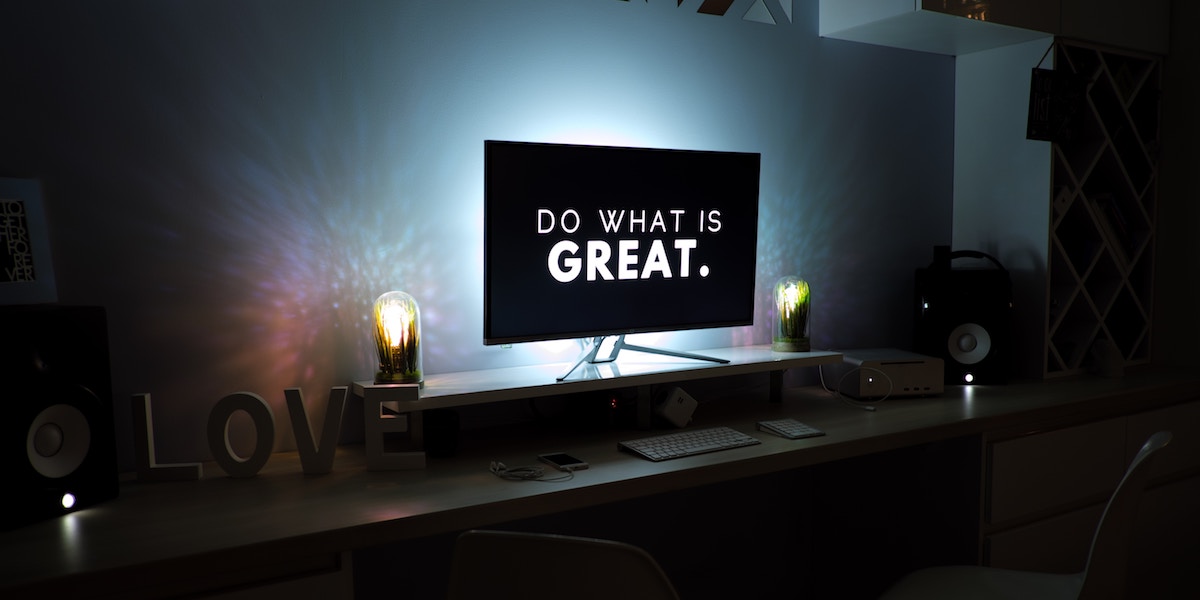READ ON TO DISCOVER:
- What his son’s cerebral palsy taught Satya Nadella about empathy
- How artificial intelligence will empower humans to achieve
- Why work-life balance isn’t a balance, but a harmony
Satya Nadella is the CEO of Microsoft and the bestselling author of Hit Refresh: The Quest to Rediscover Microsoft’s Soul and Imagine a Better Future for Everyone. Adam Grant is an organizational psychologist, the top-rated professor at Wharton, and the #1 bestselling author of Originals: How Non-Conformists Move the World. The two recently sat down to discuss the soul of Microsoft, the future of work, and why learn-it-all’s beat know-it-all’s every time.
This conversation has been edited and condensed. To view the full version, click the video below.
Adam: You [once] took an entrance exam to the IIT [Indian Institute of Technology], and failed. How did you rebound from that and decide to become a computer scientist anyway?
Satya: My father used to look at my report cards and be stunned as to how anybody could be that bad. But he never made me feel terrible about it—he would just say, “That means you must have passions other than trying to score well.”
In ninth grade, he bought me a Sinclair ZX80, which was my first introduction to computers. That turned me on to what eventually became a real passion. Quite frankly, I wouldn’t have done computer science if I had not failed the IIT exam.
I went and got an engineering degree after all, then followed it up with a master’s, and the rest is history.
Adam: What brought you to Microsoft? One of the things that comes through in your book is that you felt like this was a big luck story. You were in the right place at the right time.
Satya: Oh for sure. I was [about] to go to business school, and I got a Microsoft offer. I said, “Maybe not—I’ll still go to business school.” But the guy that hired me convinced me to drop out and join, so that’s what I did.
I joined Microsoft at a very exciting time, when we were just creating a 32-bit operating system, what became Windows NT. We were able to do a fantastic job of democratizing technology so that small and large businesses could deploy what became the computing power that transformed business. In fact, if you look at productivity stats, the last time technology truly contributed to productivity growth for a broad swath of the economy was the late 90s and early 2000s, thanks to some of the work that happened at Microsoft and elsewhere during that era.
“The person who has less, but is a learn-it-all, will ultimately [become] better.”
Adam: You claim that the company has a soul. What is the soul of a company?
Satya: Here’s my belief: I think companies have a core identity. That’s one of the reasons why I tell, even internally, the story of our birth a lot. Technology comes and goes; there are profound shifts in the paradigms. [So] your core identity has to be reinforced and expressed differently with changing technology, but you don’t need to pick a completely different identity. Why does the world need you? I always ask myself, “What is it that we should do for customers and partners? What sensibility would be lost if we disappeared?” The existential question is helpful in picking strategy and which markets we want to participate in.
Trending: 5 Reasons Life Gets Better After Your 40s
Adam: We normally define identity as what’s distinctive, central, and enduring about an organization. How did you figure out what that soul was at Microsoft?
Satya: It goes back to recognizing who we are at our best. We’re a tool maker. We create platforms for others to create. We create technology so that others can create more technology. [Whether] it’s a small business, a large business, or a public sector organization, if they can take the building blocks we create and turn it into intelligence that’s driving them, then we’ve added value. That approach is what I identify as the identity and the soul.
Adam: [When you became the CEO,] pretty quickly you said, “Look, we’re going to orchestrate a major culture change.” I think the first quote I heard from you was, “For too long we’ve been the know-it-all company, and we need to become the learn-it-all company.” That’s not an easy message to deliver. What led you to that?
Satya: If you look at the distance between Microsoft and the competition in the late 90s and early 2000s, there was real daylight. It is natural that, when you’re doing so well, the culture feels like, “Yeah, [we] know it all.”
The inspiration for the cultural change came from Carol Dweck’s work around mindset. [Say] you have two students—one of them has more innate capability, and the other has less. The person who has less, but is a learn-it-all, will ultimately [become] better. That applies to CEOs, and that applies to companies. I think it has been a helpful cultural metaphor for us to say that you can’t act like a know-it-all; you have to be a learn-it-all.
Adam: It also comes in handy for those of us who are parents, right? We’ve all said, “Don’t be a know-it-all,” but I never had anything to say after that. Now there’s an alternative.

In the book, you’re incredibly open and candid about some challenges that you faced in your own family, which played a big role in your developing empathy. Can you talk to us about what happened and how it changed you?
Satya: Most people think empathy is sort of a soft skill that may not be relevant for the hard work of business. Whereas I look at it and say, “What’s the source of innovation?” The source of innovation is your ability to grasp the unmet, unarticulated needs of customers. Where is that going to come from? I believe it comes from empathy. But you can’t go in to work and switch on the empathy button. Life teaches you that. At least, that’s my experience.
My son was born when I was 29. Both my wife and I were the only children of our parents, so the birth of our first child was a much-anticipated event on both sides. We were all excited.
A few hours before Zane, my son, was born, if somebody had asked me what was going through my head, I would have talked about, “How is my wife going to go back to work? What’s the daycare going to look like?” Yet that night, everything changed. He was born with cerebral palsy.
Trending: 5 Simple Strategies for Persuading Anybody
For multiple years, I struggled with it. I was reflecting on, “Why did this happen to me? Why were all my plans thrown out the window?” Whereas, as soon as she recovered from her C-section, my wife was driving Zane up and down Seattle, taking him to every therapy possible, giving him the best chance [she could]. It was only by watching her over multiple years that I realized: nothing happened to me. Something happened to Zane, and I had to step up and be the parent.
For the first time, what clicked in a much deeper sense, which I think is innate in all of us, is that [sense of] seeing life through another’s eyes. That’s when I realized, “Wow, this is what [empathy] is.” I’m sure that was reflected in me as a manager and as a colleague.
People talk about compartmentalizing your work life from your private life, [but] in reality, how does one do it? You are one complete self in both places. So that’s where I think about empathy as listening to what happens to you in life, and then expressing yourself completely, even at work.
Adam: This is an interesting lens to bring into Microsoft. You’re talking about empathy, and this is a company that historically was known for having a reasonable amount of competition—ranking people that are pitted against each other.
I remember a story from the 90s with one of the usability test labs, where the data came back and six out of 10 people didn’t understand the graphical user interface that Windows was using. A software engineer said, “Where did you find six morons?” You’re shifting that, right? You’re trying to get everyone to be more user-focused, to bring empathy to the table. How have you gone about doing that?
“The source of innovation is your ability to grasp the unmet, unarticulated needs of customers. Where is that going to come from? I believe it comes from empathy.”
Satya: Saying, “Okay, let’s go from know-it-all’s to learn-it-all’s,” is to frame it as a continuous process of renewal, [rather than] a transformation from one set of attributes frozen in time to another. This learning culture means that you have to learn every day.
For example, [take] this customer obsession—if you really want to get good at meeting unmet, unarticulated needs, you’ve got to be able to listen to what’s happening. It could be an engineer looking at log files, it could be a salesperson actually talking [to a customer]—in both [cases], you’re recognizing patterns way beyond what is in front of you. That’s a skill that we can learn, a muscle you can exercise every day.
A second thing is diversity and inclusion. The culture around diversity and inclusion comes [about through] behaviors that every individual exhibits in every meeting. Do you go into a meeting where you recognize the differing styles? Do you recognize how to create an inclusive environment so that people can participate?
Adam: I want to talk about technology. About two years ago, I saw you give a speech at a Microsoft event where you laid out the future of Cortana, and the way that my day was going to be scheduled—where my bot would talk to your bot, and then it would call up the history of all the people I’d met with in the city that I’m going to and prompt me for how to meet with those people. I was really excited and a little freaked out. Can you paint a picture for where you seeing this going in the next five, 10 years?
Satya: See, the ultimate interface has to be natural language. Up to now, we’ve all interacted with the computer based on the metaphors that the computer has built in to it, whether it’s the graphical interface, touch, or even the speech interface today. [But] it’s not a real dialogue. You’re still learning how to talk to a machine based on its understanding, not yours.
So I think you have to get to a dialogue with computers that is completely natural. That’s the ultimate quest. That’s our pursuit when we think about Cortana or Siri or Alexa or Google assistant or what have you. They’re all getting smarter, but I think the future of the interface is that it’s not going to be device-bound at all. It’s going to be multi-sense and multi-device.
Trending: 40 Nonfiction Books to Look Out for in 2024
For me, some of the delightful things Cortana does for me today is if I say to you, “Adam, I’ll call you back on Friday,” guess what? Cortana wakes up on Friday and says, “Hey, did you do this?” I didn’t have to go enter it in my to-do app. That ability to keep track of commitments, that’s what a smart assistant should do. And there’s much more coming.

Adam: It seems like the difference between Cortana and a manager is that I can say to Cortana, “No, I didn’t do it, and I don’t want to,” whereas a person might hold me accountable. What’s the role for humans as our assistants get smarter and smarter?
Satya: Most people say that it’s the AI versus the human. [But] I think we have to first grab hold of all the opportunities AI creates to empower humans.
For example, in Windows 10 we launched some new capabilities for eye gaze. Basically, the gaze of your eye is an input mechanism, which is tremendous for someone who has ALS, because they can now type with just their eyes. One of the apps we launched is called Seeing Eye, which gives anybody with visual impairment the ability to interpret the world, because of the camera’s ability to recognize objects. Learning tools inside Word can give a dyslexic kid the ability to read.
These are all things that came out of AI. In fact, one of the things we worked on at Cambridge was a project for radiotherapy called Inner Eye. Doctors spend enormous amounts of time trying to manually go over a tumor and demarcate it, whereas AI can do a much better job with more precision, and the doctor can then spend more time with the patient. So I fundamentally believe that AI can be designed to empower humans to do more and achieve more.
That said, we should be clear-eyed about displacement. That’s where my passion for LinkedIn comes from—we can use LinkedIn as that digital feedback loop for [questions like], “What are the jobs of the future? What skills are required? How do we deliver that training?” Then, I think we as a society can do a better job of dealing with what is inevitably going to be pretty hard displacement.
Adam: [Regarding] work-life balance, I think your story is particularly interesting because in addition to the challenges you faced with your children, you also did a commute between Seattle and Vancouver for years. How did you manage that, and what advice do you have for how we can all keep it together?
Satya: The one thing that I’m trying to practice is to not view it as a balance that needs to be accounted for, but as a harmony that you find. Maybe that’s a better frame, because then you don’t get into this anxiety of measuring it in quantitative terms like time, but [instead] by quality.
For example, how much time do you spend with your kids where you’re not reaching for your phone, or not thinking about the email that you are about to send? Attention is your scarcest commodity. How you portion it is probably the most important thing. [With] the tools and technology we want to build, we want to give you back that empowerment, but for me, that’s been core to how I achieve some harmony between work and life.



























